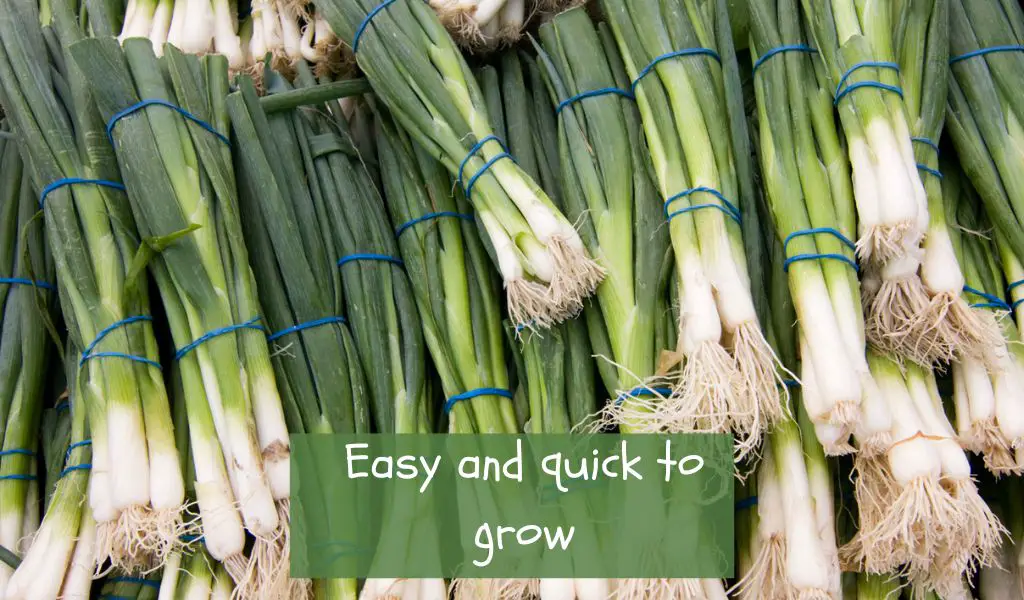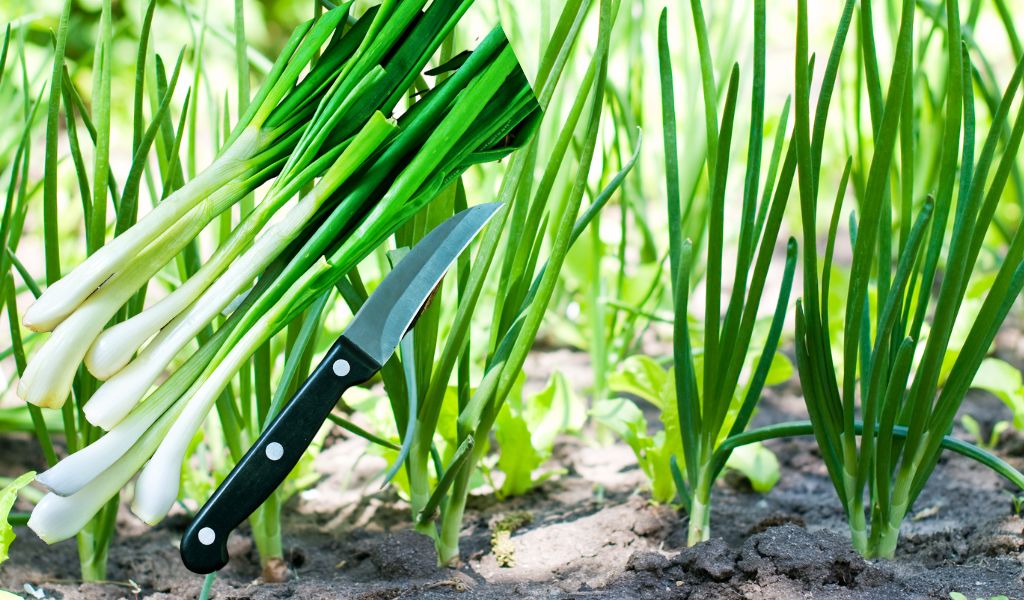Green onions, also known as scallions, are a versatile and flavorful ingredient in many cuisines.
They are easy to grow at home and require minimal space and effort.
In this article, we will cover everything you need to know to successfully grow green onions in your garden or indoor space.
Why Grow Green Onions?
Green onions are a great addition to any garden or indoor growing space.
Here are some reasons why you should consider growing green onions:
Green onions are easy to grow and require minimal space.
They are a fast-growing crop and can be harvested in as little as 20-30 days.
Green onions are a nutritious addition to any diet, as they are high in vitamins A and C.
They add a fresh and flavorful element to many dishes, from salads to stir-fries.

Choosing the Right Varieties of Green Onions
There are several varieties of green onions to choose from, each with its own unique flavor and characteristics. Some popular varieties include:
Evergreen Hardy White: This variety is known for its hardiness and ability to withstand cold temperatures.
Tokyo Long White: These long, slender onions have a mild and sweet flavor.
Red Baron: As the name suggests, these onions have a deep red color and a mild flavor.
When choosing a variety of green onions to grow, consider your climate and growing conditions, as well as your personal taste preferences.





When and Where to Plant Green Onions
Green onions can be planted in both spring and fall, depending on your location and climate.
They prefer cooler temperatures and can tolerate some frost.
In warmer climates, green onions can be planted in the fall and grown throughout the winter.
Green onions can be grown in a variety of locations, including in raised beds, containers, and even indoors.
They require a well-draining soil and plenty of sunlight.
Soil Requirements for Green Onions
Green onions prefer a fertile, well-draining soil with a pH between 6.0 and 7.0.
If your soil is heavy or clay-like, consider adding organic matter such as compost or well-rotted manure to improve drainage.
Before planting, work a balanced fertilizer into the soil to provide the necessary nutrients for growth.
Watering and Fertilizing Green Onions
Green onions require regular watering, especially during hot and dry weather.
However, be careful not to overwater, as this can lead to rot and disease. Aim to keep the soil consistently moist but not waterlogged.
Fertilize green onions with a balanced fertilizer every 4-6 weeks throughout the growing season. Be sure to follow the manufacturer’s instructions for application rates.
Maintaining Green Onions
Green onions are a low-maintenance crop, but there are a few things to keep in mind to ensure optimal growth:
Keep the soil consistently moist but not waterlogged.
Weed regularly to prevent competition for nutrients and water.
Thin the seedlings to about 2 inches apart to allow for proper growth and development.
Consider using a trellis or other support system to keep the plants upright and prevent bending.
Harvesting Green Onions
Green onions can be harvested when they reach a diameter of about ¼ inch and a height of 6-8 inches.
Use a sharp knife or scissors to cut the stems just above the soil level.
Harvesting can begin as early as 20-30 days after planting, and the plants can be harvested multiple times throughout the growing season.
Common Pests and Diseases of Green Onions
Green onions are generally resistant to pests and diseases. However, there are a few issues that can arise, including:
Onion maggots: These small, white maggots feed on the roots of the plant and can cause stunted growth and yellowing leaves.
Thrips: These tiny insects feed on the leaves of the plant and can cause discoloration and distortion.
Fusarium basal rot: This fungal disease causes the plant to wilt and eventually die.
To prevent these issues, practice good hygiene and sanitation practices, such as cleaning up plant debris and rotating crops.
If you do encounter pests or disease, consider using an organic pesticide or fungicide.
Using Green Onions in Cooking
Green onions are a versatile ingredient that can be used in a variety of dishes, from soups and stews to salads and stir-fries.
Here are a few ideas for using green onions in your cooking:
Add sliced green onions to omelets or scrambled eggs for a pop of color and flavor.
Use green onions as a garnish for soups and stews.
Add chopped green onions to salads for a fresh and flavorful crunch.
Use green onions in marinades and sauces for a subtle onion flavor.

Frequently Asked Questions (FAQs)
Can I grow green onions indoors?
Yes, green onions can be grown indoors in a sunny location. Use a container with good drainage and plant the seeds or seedlings in a well-draining soil.
How often should I water green onions?
Green onions should be watered regularly, but be careful not to overwater. Aim to keep the soil consistently moist but not waterlogged.
How long does it take for green onions to grow?
Green onions can be harvested as early as 20-30 days after planting, depending on the variety and growing conditions.
How do I know when to harvest green onions?
Green onions can be harvested when they reach a diameter of about ¼ inch and a height of 6-8 inches.
Can I regrow green onions from scraps?
Yes, green onions can be regrown from scraps by placing the root end in water or soil and allowing it to sprout new growth.
Conclusion and final thoughts 💭
Growing green onions is an easy and rewarding endeavor for both novice and experienced gardeners.
By following the tips and techniques outlined in this article, you can successfully grow green onions in your garden or indoor space and enjoy their fresh and flavorful taste in a variety of dishes.




